Wholeheartedly encouraged by my parents, and enthusiastically supported by my two elder sisters, from an early age I have always read voraciously and written with a matching zeal. Regrettably, an uninspiring secondary modern comprehensive school education was far from stimulating. Instead of nurturing developing abilities, a blanket of disinterest from teachers soon snuffed any spark of my individuality.
It appeared to me that the mandate was to hurry you along the conveyor belt of conformity and out through the school gates for the final time. I soon understood that there’d be no applause for difference or uniqueness. Instead, those characteristics were to be feared and quashed. However, if you could kick a football and score goals, run like a cheetah, or successfully lob a shot put, then the celebratory Olympian laurel wreath was yours for the taking.
Some of m y earliest recollections of literary adventures are adhered to ‘Timothy the Little Brown Bear’, a sartorially trendsetting young bruin clad in blue dungarees adorned with white polka dots. Despite wisdom imparted by the wise owl, Tim’s stubborn refusal to learn to read resulted in myriad mishaps. My tears cascaded without shame when, unable to read the warning notice, my furry friend sat on a freshly-painted bench, ruining his snazzy dungarees.
y earliest recollections of literary adventures are adhered to ‘Timothy the Little Brown Bear’, a sartorially trendsetting young bruin clad in blue dungarees adorned with white polka dots. Despite wisdom imparted by the wise owl, Tim’s stubborn refusal to learn to read resulted in myriad mishaps. My tears cascaded without shame when, unable to read the warning notice, my furry friend sat on a freshly-painted bench, ruining his snazzy dungarees.
W ith a change of wind, my capricious loyalties then transferred to ‘The Inquisitive Elf’, a slim tome not troubled by lengthy word-count, but which completely charmed me to the point of obsession.
ith a change of wind, my capricious loyalties then transferred to ‘The Inquisitive Elf’, a slim tome not troubled by lengthy word-count, but which completely charmed me to the point of obsession.
Thrills abounded with the adventures of the nosey elf who scampered through the woodland clad in a fetching ensemble comprising of a crimson coloured one-piece complete with pointed hood and oak-leaf green pixie boots. (Oh come on, we’ve all been there.)
I adored Enid Blyton and aged eight, I sat before the coal fire gripping my gifted copy of ‘The Mystery of The Invisible Thief’, my eyes popping out like the proverbial chapel hat pegs at the developing tale of amateur detection. This story holds some level of responsibility for my enduring dislike of annoying small men, precociously judgemental brats, and out of control yapping little dogs.
adored Enid Blyton and aged eight, I sat before the coal fire gripping my gifted copy of ‘The Mystery of The Invisible Thief’, my eyes popping out like the proverbial chapel hat pegs at the developing tale of amateur detection. This story holds some level of responsibility for my enduring dislike of annoying small men, precociously judgemental brats, and out of control yapping little dogs.
T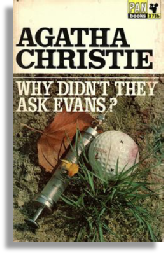 hen my choice of mystery solvers matured from The Five Find-Outers and dog to Lady Frances Derwent (racily known as ‘Frankie’ to her chums) who, with her lovestruck sidekick Bobby Jones, strove to answer the curious question gasped by a dying man: ‘Why Didn’t They Ask Evans?’ This event was probably the most exciting thing to happen on a golf course. The enthralling conundrum set in motion my love of Agatha Christie’s novels and eventually led to tireless explorations of charity shops in search of the various editions, in those days readily available for ten or twenty pence per copy.
hen my choice of mystery solvers matured from The Five Find-Outers and dog to Lady Frances Derwent (racily known as ‘Frankie’ to her chums) who, with her lovestruck sidekick Bobby Jones, strove to answer the curious question gasped by a dying man: ‘Why Didn’t They Ask Evans?’ This event was probably the most exciting thing to happen on a golf course. The enthralling conundrum set in motion my love of Agatha Christie’s novels and eventually led to tireless explorations of charity shops in search of the various editions, in those days readily available for ten or twenty pence per copy.
W hen I was eleven, my dad recommended that I read the works of H. E. Bates, certain I’d love the descriptiveness which he said reminded him of the short stories I’d compose on the old Corona typewriter he’d brought home from work for me - a wonderful machine made redundant due to the advance in electronic models. Our Saturday afternoon visits to the local library were already the focal point of my week. Seduced by the bulky hardback of ‘Love for Lydia’, I eagerly devoured The Triple Echo, Through the Woods, and countless others.
hen I was eleven, my dad recommended that I read the works of H. E. Bates, certain I’d love the descriptiveness which he said reminded him of the short stories I’d compose on the old Corona typewriter he’d brought home from work for me - a wonderful machine made redundant due to the advance in electronic models. Our Saturday afternoon visits to the local library were already the focal point of my week. Seduced by the bulky hardback of ‘Love for Lydia’, I eagerly devoured The Triple Echo, Through the Woods, and countless others.
 Without releasing spoilers for my book, in 1977 during one of my routine self-concealments within the school library, I discovered ‘The Friends’ by Rosa Guy. I was instantly drawn in by the parallels with my own current situation, and soon other similarities became apparent. Four decades later I gleefully rediscovered the book online and devoured it once more, appreciating it from an adult perspective and with my own challenging history nudging my shoulder.
Without releasing spoilers for my book, in 1977 during one of my routine self-concealments within the school library, I discovered ‘The Friends’ by Rosa Guy. I was instantly drawn in by the parallels with my own current situation, and soon other similarities became apparent. Four decades later I gleefully rediscovered the book online and devoured it once more, appreciating it from an adult perspective and with my own challenging history nudging my shoulder.
A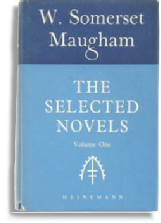 s well as high-octane gay magazines HIM, Zipper and copies of Honcho and Blueboy imported from America, my discovery of the English gay monthly magazine ‘Q’ seemed less frenetically charged and more genteel. Within its pages I was introduced to such characters as Douglas Byng, Christopher Isherwood, Noel Coward, W. Somerset Maugham and others from the generations before me. ‘Liza of Lambeth’ was the first of WSM’s stories that I read and I was instantly hypnotized by his luscious descriptiveness.
s well as high-octane gay magazines HIM, Zipper and copies of Honcho and Blueboy imported from America, my discovery of the English gay monthly magazine ‘Q’ seemed less frenetically charged and more genteel. Within its pages I was introduced to such characters as Douglas Byng, Christopher Isherwood, Noel Coward, W. Somerset Maugham and others from the generations before me. ‘Liza of Lambeth’ was the first of WSM’s stories that I read and I was instantly hypnotized by his luscious descriptiveness.
Purchasing Armistead Maupi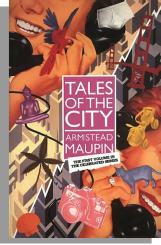 n’s fabulous Tales Of The City was essential as I’d been entranced with San Francisco ever since a young boy. The first volume gloriously fed my insatiable appetite for all things San Francisco, and after several revisits had to admit that I was a Tales Junkie. However, I’d encountered Armistead Maupin before. In winter 1980 I’d bought the September issue of the American gay magazine, Blueboy. Fortunately for me, a progressive newsagent opposite the city bus depot imported the periodical. Beneath the red letters of the name, white letters announced: Living In The Promised Land: SAN FRANCISCO NOW! Within the pages was an article by Armistead Maupin: ‘The City That Dare Not Speak Its Name’. The eighteen-year-old me could never have believed that in the distant future I would re-read ‘Tales Of The City’ in its entirety whilst flying business class on one of numerous visits to San Francisco. I would never, ever, have dared to dream…
n’s fabulous Tales Of The City was essential as I’d been entranced with San Francisco ever since a young boy. The first volume gloriously fed my insatiable appetite for all things San Francisco, and after several revisits had to admit that I was a Tales Junkie. However, I’d encountered Armistead Maupin before. In winter 1980 I’d bought the September issue of the American gay magazine, Blueboy. Fortunately for me, a progressive newsagent opposite the city bus depot imported the periodical. Beneath the red letters of the name, white letters announced: Living In The Promised Land: SAN FRANCISCO NOW! Within the pages was an article by Armistead Maupin: ‘The City That Dare Not Speak Its Name’. The eighteen-year-old me could never have believed that in the distant future I would re-read ‘Tales Of The City’ in its entirety whilst flying business class on one of numerous visits to San Francisco. I would never, ever, have dared to dream…
F or my thirtieth birthday a friend presented me with a wrapped, book-shaped package. “If I know you as well as I think I do, you’ll love this…” The startling lime green paper was carefully opened to reveal Hangover Square, which began my devotion to the works of Patrick Hamilton. Although I was already aware of ‘Rope’ and ‘Gaslight’, I went in search of further titles and amongst a magnetising catalogue of work, I discovered Twenty Thousand Streets Under The Sky, The Slaves of Solitude, Craven House, and The Gorse Trilogy.
or my thirtieth birthday a friend presented me with a wrapped, book-shaped package. “If I know you as well as I think I do, you’ll love this…” The startling lime green paper was carefully opened to reveal Hangover Square, which began my devotion to the works of Patrick Hamilton. Although I was already aware of ‘Rope’ and ‘Gaslight’, I went in search of further titles and amongst a magnetising catalogue of work, I discovered Twenty Thousand Streets Under The Sky, The Slaves of Solitude, Craven House, and The Gorse Trilogy.
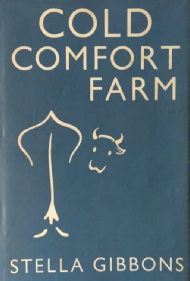 I’d heard of ‘Cold Comfort Farm’ more as printed whispers, if such a thing could exist. It wasn’t until my partner introduced me to it (his hardback copy bore the cover pictured here, albeit more dog-eared) that I fell in literary love with the beguiling and beautiful prose within, and was astonished to learn that most of Stella Gibbons’s prolific work had remained out of print for decades. Thankfully with the advent of the Internet, it became possible to locate some of her titles until a mass republishing program began in the early 2000s.
I’d heard of ‘Cold Comfort Farm’ more as printed whispers, if such a thing could exist. It wasn’t until my partner introduced me to it (his hardback copy bore the cover pictured here, albeit more dog-eared) that I fell in literary love with the beguiling and beautiful prose within, and was astonished to learn that most of Stella Gibbons’s prolific work had remained out of print for decades. Thankfully with the advent of the Internet, it became possible to locate some of her titles until a mass republishing program began in the early 2000s.
Back to the top of the page









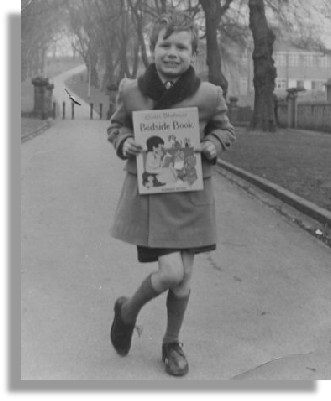
 y earliest recollections of literary adventures are adhered to ‘Timothy the Little Brown Bear’, a sartorially trendsetting young bruin clad in blue dungarees adorned with white polka dots. Despite wisdom imparted by the wise owl, Tim’s stubborn refusal to learn to read resulted in myriad mishaps. My tears cascaded without shame when, unable to read the warning notice, my furry friend sat on a freshly-
y earliest recollections of literary adventures are adhered to ‘Timothy the Little Brown Bear’, a sartorially trendsetting young bruin clad in blue dungarees adorned with white polka dots. Despite wisdom imparted by the wise owl, Tim’s stubborn refusal to learn to read resulted in myriad mishaps. My tears cascaded without shame when, unable to read the warning notice, my furry friend sat on a freshly- ith a change of wind, my capricious loyalties then transferred to ‘The Inquisitive Elf’, a slim tome not troubled by lengthy word-
ith a change of wind, my capricious loyalties then transferred to ‘The Inquisitive Elf’, a slim tome not troubled by lengthy word-
 hen my choice of mystery solvers matured from The Five Find-
hen my choice of mystery solvers matured from The Five Find- hen I was eleven, my dad recommended that I read the works of H. E. Bates, certain I’d love the descriptiveness which he said reminded him of the short stories I’d compose on the old Corona typewriter he’d brought home from work for me -
hen I was eleven, my dad recommended that I read the works of H. E. Bates, certain I’d love the descriptiveness which he said reminded him of the short stories I’d compose on the old Corona typewriter he’d brought home from work for me - Without releasing spoilers for my book, in 1977 during one of my routine self-
Without releasing spoilers for my book, in 1977 during one of my routine self- s well as high-
s well as high- n’s fabulous
n’s fabulous  or my thirtieth birthday a friend presented me with a wrapped, book-
or my thirtieth birthday a friend presented me with a wrapped, book- I’d heard of ‘Cold Comfort Farm’ more as printed whispers, if such a thing could exist. It wasn’t until my partner introduced me to it (his hardback copy bore the cover pictured here, albeit more dog-
I’d heard of ‘Cold Comfort Farm’ more as printed whispers, if such a thing could exist. It wasn’t until my partner introduced me to it (his hardback copy bore the cover pictured here, albeit more dog-